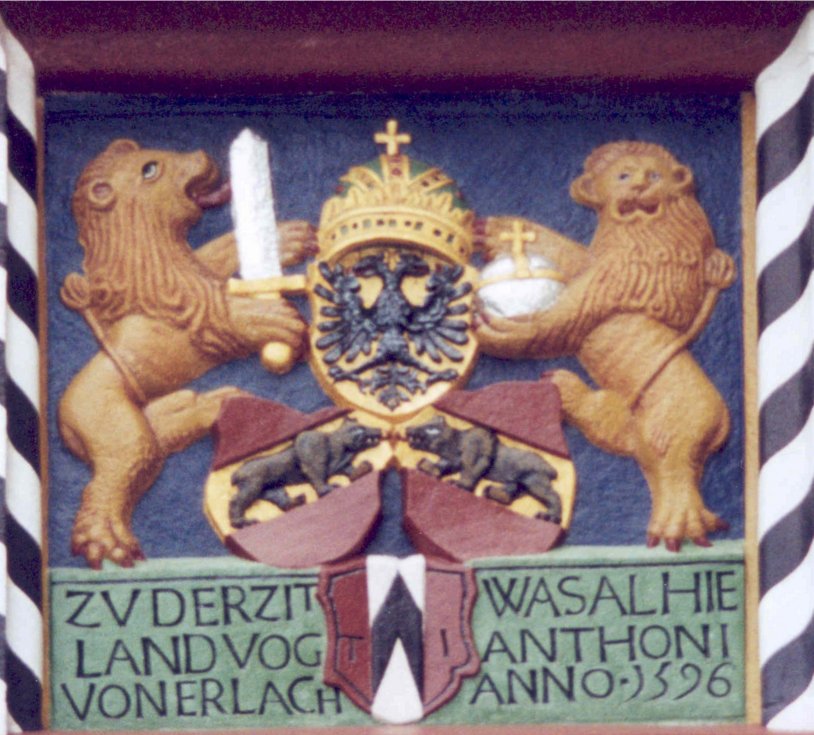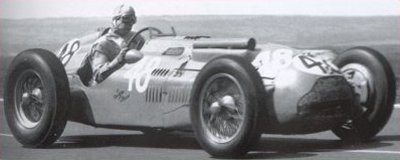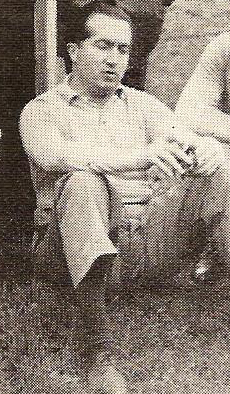|
Peter Hirt
Peter Hirt (30 March 1910 – 28 June 1992) was a racing driver from Switzerland. He participated in five World Championship Grands Prix, debuting on 27 May 1951. He scored no championship points. He was a member of the Ecurie Espadon. Presentation document Ecurie Espadon Complete Formula One World Championship results ( key) Indicates shared drive with Rudi Fischer References {{DEFAULTSORT:Hirt, Peter 1910 births 1992 deaths Swiss racing drivers Swiss Formula One drivers Écurie Espadon Formula One drivers People from Lenzburg Sportspeople from Aargau ... [...More Info...] [...Related Items...] OR: [Wikipedia] [Google] [Baidu] |
Lenzburg
Lenzburg is a town in the central region of the Swiss canton Aargau and is the capital of the Lenzburg District. The town, founded in the Middle Ages, lies in the Seetal valley, about 3 kilometres south of the Aare river. Lenzburg and the neighbouring municipalities of Niederlenz and Staufen have grown together in an agglomeration. History A Neolithic grave field of the Cortaillod culture has been discovered on the ''Goffersberg'' (close to the Lenzburg Castle) dating from 4300 - 3500 BCE. A Roman theater was uncovered when a motorway was built in 1964. It was part of a small settlement with 500 inhabitants that existed for approximately 200 years. The settlement was abandoned in the 3rd century. In the 5th and 6th centuries, an Alamanni settlement existed. Lenzburg is first mentioned in 924 as ''de Lencis''. In 1036, Lenzburg Castle was used for the first time as seat for the Count of Lenzburg, then an important lord. The house however died out in 1173, and the castle was t ... [...More Info...] [...Related Items...] OR: [Wikipedia] [Google] [Baidu] |
1951 French Grand Prix
The 1951 French Grand Prix was a Formula One motor race held at Reims-Gueux on 1 July 1951. It was race 4 of 8 in the 1951 World Championship of Drivers and was won by Juan Manuel Fangio and Luigi Fagioli driving an Alfa Romeo. It was the first of three occasions where two drivers would be credited with a Grand Prix win after sharing a car. The race, which also carried the honorific title of ''European Grand Prix'', saw the World Championship debuts of Aldo Gordini, André Simon and Onofre Marimón. Fagioli's victory, his first in a World Championship race, made him the oldest driver to win a World Championship Grand Prix, a record he still holds. This race also holds the record for the longest Formula One Grand Prix in terms of total distance needed to cover. 77 laps of the 4.856 mile Reims-Gueux circuit totaled to 373.961 miles. Report About 10 laps into the race, the engine in Fangio's car began misfiring, so he stopped at the pits to have the magneto changed, but only com ... [...More Info...] [...Related Items...] OR: [Wikipedia] [Google] [Baidu] |
1952 German Grand Prix
The 1952 German Grand Prix was a Formula Two race held on 3 August 1952 at the Nürburgring Nordschleife. It was race 6 of 8 in the 1952 World Championship of Drivers, in which each Grand Prix was run to Formula Two rules rather than the Formula One regulations normally used. The 18-lap race was won by Ferrari driver Alberto Ascari after he started from pole position. His teammates Giuseppe Farina and Rudi Fischer finished in second and third places. Report The Maserati factory team finally appeared with their new car, the A6GCM, which was driven by Felice Bonetto. Also racing A6GCMs were the Escuderia Bandeirantes drivers Bianco and Cantoni. Ferrari once again entered the successful trio of Alberto Ascari, Nino Farina and Piero Taruffi, while there were privateer Ferrari entries for Rudi Fischer and Rudolf Schoeller of Ecurie Espadon, Roger Laurent of Ecurie Francorchamps, and Piero Carini of Scuderia Marzotto. Jean Behra returned to action for the Gordini team, having reco ... [...More Info...] [...Related Items...] OR: [Wikipedia] [Google] [Baidu] |
1952 British Grand Prix
The 1952 British Grand Prix was a Formula Two race held on 19 July 1952 at Silverstone Circuit. It was race 5 of 8 in the 1952 World Championship of Drivers, in which each Grand Prix was run to Formula Two rules rather than the Formula One regulations normally used. New pit facilities had been built on the straight between Woodcote and Copse corners; the original pits were located between Abbey and Woodcote. Report Jean Behra was unable to take part in the British Grand Prix, having broken his shoulder blade at the non-championship Grand Prix de Sables d'Olonne the previous weekend. Consequently, Maurice Trintignant took over Behra's Gordini T16 for Silverstone, having driven a Simca-Gordini T15 at Rouen-Les-Essarts. The Gordini team also fielded regular drivers Robert Manzon and Prince Bira. As in the previous race, Belgian driver Johnny Claes entered a privateer Simca-Gordini under the 'Ecurie Belge' moniker. Ferrari stuck with the same three drivers — Alberto Ascari, N ... [...More Info...] [...Related Items...] OR: [Wikipedia] [Google] [Baidu] |
1952 French Grand Prix
The 1952 French Grand Prix was a Formula Two race held on 6 July 1952 at Rouen-Les-Essarts. It was race 4 of 8 in the 1952 World Championship of Drivers, in which each Grand Prix was run to Formula Two rules rather than the Formula One regulations normally used. Unusually this race was run over a duration of 3 hours, rather than a fixed distance. Report Having won the previous weekend's Grand Prix de la Marne, Jean Behra, racing for Equipe Gordini, was among the favourites for the first French Grand Prix to be held at Rouen-Les-Essarts. Also driving for Gordini were regulars Robert Manzon and Prince Bira, alongside Maurice Trintignant, who replaced Johnny Claes from the lineup for the previous round. Claes entered the race in a Simca-Gordini under his own 'Ecurie Belge' label, which he had used in the 1950 and 1951 seasons. Ferrari retained their lineup of Ascari, Farina and Taruffi, who had locked out the front row of the grid in Belgium. There were also several privateer Fer ... [...More Info...] [...Related Items...] OR: [Wikipedia] [Google] [Baidu] |
1952 Belgian Grand Prix
The 1952 Belgian Grand Prix was a Formula Two race held on 22 June 1952 at Circuit de Spa-Francorchamps. It was race 3 of 8 in the 1952 World Championship of Drivers, in which each Grand Prix was run to Formula Two rules rather than the Formula One regulations normally used. Report Maserati's new A6GCM was still not ready, and, to compound this, their lead driver Juan Manuel Fangio had suffered back injuries at the non-championship Monza Grand Prix. This meant that Ferrari were once again favoured for success in the race, with their driver lineup consisting of Alberto Ascari (in place of André Simon), Nino Farina and Piero Taruffi. There were also two privateer Ferrari entries: local driver Charles de Tornaco of Ecurie Francorchamps, and Louis Rosier. The Gordini team expanded their lineup to include Belgian driver Johnny Claes, alongside Behra, Manzon and Bira. American Robert O'Brien also drove a Simca-Gordini for this race. HWM also recruited a pair of Belgian drivers ... [...More Info...] [...Related Items...] OR: [Wikipedia] [Google] [Baidu] |
1952 Indianapolis 500
The 36th International 500-Mile Sweepstakes was a motor race held at the Indianapolis Motor Speedway on Friday, May 30, 1952. It was the opening race of the 1952 AAA National Championship Trail and was also race 2 of 8 in the 1952 World Championship of Drivers. Troy Ruttman won the race for car owner J. C. Agajanian. Ruttman, aged 22 years and 80 days, set the record for the youngest 500 winner in history. It was also the last dirt track car to win at Indy. Ruttman's win also saw him become the youngest winner of a World Drivers' Championship race, a record he would hold for 51 years until the 2003 Hungarian Grand Prix when Spanish driver Fernando Alonso won at the age of 22 years and 26 days. Bill Vukovich led 150 laps, but with 9 laps to go, he broke a steering linkage while leading. He nursed his car to a stop against the outside wall, preventing other cars from getting involved in the incident. In the third year that the 500 was included in the World Championship, Ferrari ... [...More Info...] [...Related Items...] OR: [Wikipedia] [Google] [Baidu] |
1952 Swiss Grand Prix
The 1952 Swiss Grand Prix was a Formula Two race held on 18 May 1952 at Bremgarten Circuit. It was the first round of the 1952 World Championship of Drivers, in which each Grand Prix was run to Formula Two rules rather than the Formula One regulations normally used. Pre-WWII Grand Prix great Rudolf Caracciola crashed heavily during a support sports car race. He survived with a broken leg, but this crash effectively ended his racing career. He was driving a Mercedes-Benz 300 SL; his brakes locked up going into a corner and the car skidded off the road and hit a tree. Italian driver Piero Taruffi scored his only win in a World Championship race, driving for Ferrari. Report With the withdrawal of Alfa Romeo from the World Championship, Ferrari were left as the sole competitive team under the existing Formula One regulations. It was therefore decided to restrict the World Championship Grand Prix races to Formula Two cars. The works Ferrari team brought three drivers to the Swiss Gra ... [...More Info...] [...Related Items...] OR: [Wikipedia] [Google] [Baidu] |
V12 Engine
A V12 engine is a twelve-cylinder piston engine where two banks of six cylinders are arranged in a V configuration around a common crankshaft. V12 engines are more common than V10 engines. However, they are less common than V8 engines. The first V12 engine was built in 1904 for use in racing boats. Due to the balanced nature of the engine and the smooth delivery of power, V12 engines were found in early luxury automobiles, boats, aircraft, and tanks. Aircraft V12 engines reached their apogee during World War II, following which they were mostly replaced by jet engines. In Formula One racing, V12 engines were common during the late 1960s and early 1990s. Applications of V12 engines in the 21st century have been as marine engines, in railway locomotives, as large stationary power as well as in some European sports and luxury cars. Design Balance and smoothness Each bank of a V12 engine essentially functions as a straight-six engine, which by itself has perfect primary and ... [...More Info...] [...Related Items...] OR: [Wikipedia] [Google] [Baidu] |
Ferrari 212 F1
The Ferrari 212 F1 was a Formula 1 and Formula 2 racing car designed by Aurelio Lampredi for Scuderia Ferrari in . Racing history Two 212 F1 chassis were built. One with a De Dion rear axle (chassis 102) and one car with a swing axle (chassis 110). The car was powered by a V12 engine, bore/stroke: × . The Ferrari 212 F1 (chassis 102) made its debut at the 1951 Syracuse Grand Prix where it was driven by Dorino Serafini. Serafini finished second behind Ferrari teammate Luigi Villoresi. Two weeks later Serafini was back behind the wheel of the car at Pau. He qualified the car in third place but retired from the race after 49 laps due to steering problems. These are the only two races in which chassis 102 was entered. Ferrari sold chassis 110 to Swiss driver Rudi Fischer, the leader of Ecurie Espadon. Fischer debuted the car at the non-championship Syracuse Grand Prix. He finished third behind Serafini in the other 212 F1. Fischer finished third at the San Remo Grand Prix and s ... [...More Info...] [...Related Items...] OR: [Wikipedia] [Google] [Baidu] |
1952 Formula One Season
The 1952 Formula One season was the sixth season of FIA Formula One motor racing. In comparison to previous seasons, the 1952 season consisted of a relatively small number of Formula One races, following the decision to run all the Grand Prix events counting towards the World Championship of Drivers to Formula Two regulations rather than Formula One. The Indianapolis 500, which also counted towards the World Championship, was still run to AAA regulations as in previous seasons. The 3rd FIA World Championship of Drivers, which began on 18 May and ended on 7 September after eight races, was won by Alberto Ascari, driving for Scuderia Ferrari. In addition to the Formula One races and the World Championship Formula Two races, numerous other Formula Two races, which did not count towards the championship, were held during the year. World Championship season summary Alfa Romeo, unable to fund a new car, withdrew from racing, while BRM had been preparing two V16-powered cars for th ... [...More Info...] [...Related Items...] OR: [Wikipedia] [Google] [Baidu] |
1951 Spanish Grand Prix
The 1951 Spanish Grand Prix was a Formula One motor race held on 28 October 1951 at Pedralbes Circuit. It was the eighth and final race of the 1951 World Championship of Drivers. This race was determined by tyre choice – Ferrari chose a 16-inch rear wheel, whilst Alfa Romeo settled for the 18 inch, which proved to be the better of the two options. Juan Manuel Fangio led Alberto Ascari by two points before the race. Ascari led the race from José Froilán González, but the Ferraris suffered numerous tread problems. Piero Taruffi threw a tyre tread on lap 6 and was followed on lap 7 by Luigi Villoresi, Ascari on lap 8 and Gonzalez on lap 14. The Ferraris were forced to stop frequently to change tyres and Fangio comfortably won the race and his first drivers' title, after Ascari finished 4th was not able to overhaul Fangio's total. After the race, Alfa Romeo announced that due to lack of finances, they would not be competing in the 1952 season. Entries : — Peter Whitehe ... [...More Info...] [...Related Items...] OR: [Wikipedia] [Google] [Baidu] |




